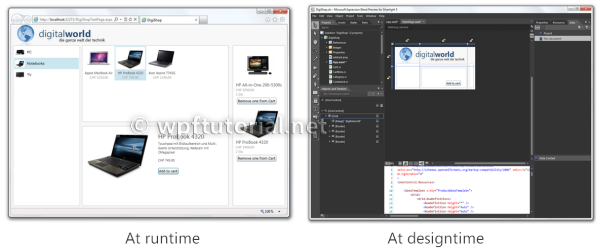Introduction
An application often looks great at runtime, but when you open it in a designer like VisualStudio or Expression Blend, the experience is quite different. The rason is that at designtime:- UserControls are not embedded in a parent view
- Width and Height are not set
- Constructor of the root-element is not called
- Root Element is replaced by the designer
- ViewModel is not created
- Controls behave different
- No mouse and keyboard events
- Design time extensions loaded

Designtime attributes
To improve the design experience, Microsoft provides special designtime attributes that can be added to any WPF element and serve as a hint for the design tool.The designtime attributes are defined in a special namespace, that is usually mapped to the
d: prefix. To tell the XAML parser not to interprete these attributes at runtime, the markup compatibility namespace is mapped to mc: and with the mc:Ignorable="d" instruction, the d: namespace is excluded.<Window xmlns:d ="http://schemas.microsoft.com/expression/blend/2008" xmlns:mc="http://schemas.openxmlformats.org/markup-compatibility/2006" mc:Ignorable="d" />
d:DesignHeight and d:DesignWidth
The d:DesignHeight and d:DesignWidth sets a fixed height and width for the element at designtime<UserControl xmlns="http://schemas.microsoft.com/..." xmlns:x="http://schemas.microsoft.com/winfx/2006/xaml" d:DesignWidth="640" d:DesignHeight="480" > <UserControl />
d:LayoutOverrides
If a property is set to a fixed value at runtime, but you want to override it at designtime, you can use the d:LayoutOverrides attribute. All properties that should be ignored at designtime can be listed, separated by a semicolon.<Border Height="250" Width="160" d:LayoutOverrides="Width, Height" > </Border>


No comments:
Post a Comment